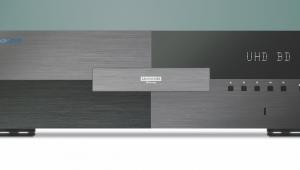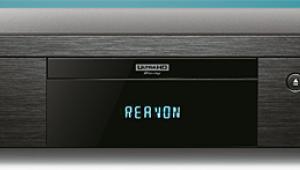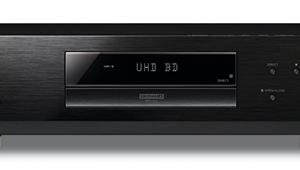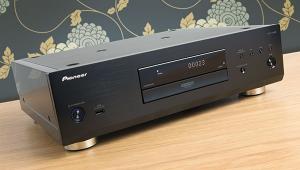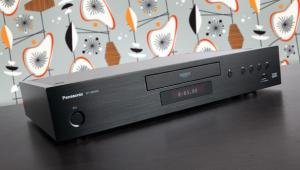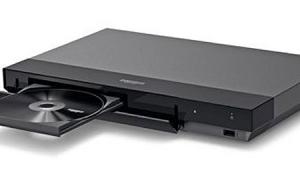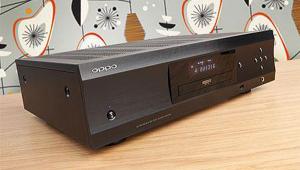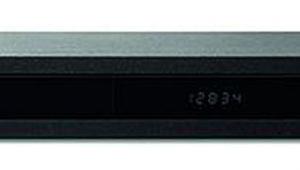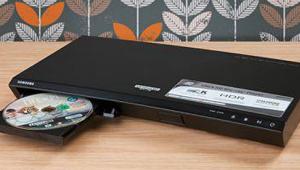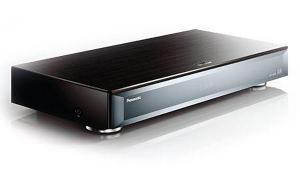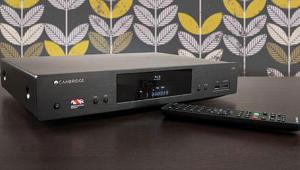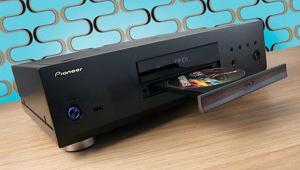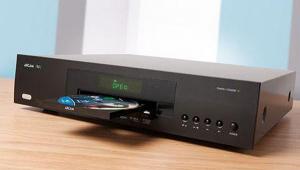Cambridge Audio 751BD review

If I were building a Blu-ray player, I suspect it would look a lot like Cambridge Audio’s Azur 751BD. It would be 3D compatible (just in case), offer network media streaming for sound and vision (because frankly that’s essential) and it would be compatible with my treasured, but sadly not growing, collection of DVD-Audio and SACDs.
It would also have a facia forged in the fires of Mount Doom. I would call it The One Facia. Sadly, the 751BD rather lets me down on that front. Instead, Cambridge Audio has settled for a rather less eldritch aluminium plate.
In truth, the 751BD is a pretty substantial player all the same. Tipping the scales at 5kg, it’s blessed with a rigidity that speaks of refinement and clarity of purpose.
Connections are many and varied, and include dual HDMI outputs. The primary HDMI feeds video to a 3D capable display, while the secondary takes lossless audio to a legacy receiver. If you have a 3D-friendly AVR you may not need to use this second output at all. Although, if you were feeling frivolous, you could feed a second display in another room. The player isn’t wi-fi enabled, but a dongle is supplied in the box should you need it.
Despite its sophistication, the 751BD is easy enough to drive. The menu system reveals shared DNA with the Oppo BDP-95EU, although other aspects of the build are distinctly CA.
One area where it definitely pips the Oppo is file compatibility. Indeed, the player got to grips with almost everything in my test folders, both across the network from a NAS and from local USB. From MP3, AAC and FLAC to AVI, MOV and MKVs, it ruled them all.
In addition to the largely nonsensical BD-Live, the player also has online access to Picasa, which is nothing if not a little random. Hopefully this ‘net connectivity will improve over coming months.
When setting up, though, take care not to select PAL as the HDMI output. Instead choose Multi-System. If you don’t, there’s a good chance some of your Blu-rays will stutter and judder like a drunken Hobbit.
Processing powerA peak beneath the lid reveals some powerful processing. A Marvell QDEO scaler is partnered by a Mediatek MTK8530 decoder, which handles 3D decoding, audio codes and suchlike. They’re joined by a 32bit Analog Devices Sharc DSP.
This upsamples all decoded material to 192kHz/24-bit, whereupon proprietary code applies jitter suppression and anti-alias filtering to all the analogue outputs.
It’s at this point that you can choose your own filtering preference, via Minimum, Linear or Steep options on the front panel. To say the difference here is subtle is an understatement. I convinced myself I preferred Linear and left it at that.
As a 2D/3D Blu-ray player the 751BD is hugely impressive. The Extended edition of The Lord of the Rings provides an epic demonstration of BD clarity, which this player revelled in. On The Return of the King, Chapter 65, The Black Gate Opens, the amount of raw detail and texture extracted from the disc is jaw-dropping. Every nuance from the AVC encode is there to be seen. Boot up and disc-loading times are nice and snappy.
DVD deinterlacing and interpolation, courtesy of the QDEO scaler, can be considered well above average. The QDEO doesn’t quite ace all the HQV Silicon Optix jaggies tests, although generally speaking upscaled video looks smooth and convincing. The Mediatek-fed second HDMI output is not quite so polished, although there’s a surprisingly small gap in performance between the two solutions.
Wolfson WM8740 DACs guard each analogue audio ouput. When it comes to audio, the 751BD exhibits outstanding imaging and musicality. The best results are to be had from Super Audio CDs, which can be output either as DSD or PCM. My preferred connection output proved to be multichannel analogue.
Sound investmentOut of the box, the 751BD plays by the rules and is region locked. However, there’s anecdotal evidence to suggest that dealers are offering unlocked editions. It’s certainly worth making enquiries. Of course, regional restrictions are far less significant for Blu-ray than DVD, because so many titles ship without playback constraints anyway.
Overall, the 751BD should be lauded as a brilliant disc-spinner. With its sturdy build and broad playback options, it’s a relevant, powerful performer. While it may lack the net-connected niceties of mass-market machines, it stomps all over them when it comes to sonic finesse. Everyone in the Shire will soon want one.
HCC VERDICT
Cambridge Audio 751BD
Price: £800 Approx
Highs: Excellent hi-def video performance; reference-grade audio; comprehensive media file support
Lows: Lacklustre net-connected content; remote isn’t backlit
Performance: 5/5
Design: 5/5
Features: 4/5
Overall: 5/5
Specifications
3D: yes Upscaling: yes to 1080p
Multiregion: no Region B BD/R2 DVD
HDMI: yes 2 x v1.4a
Component: yes one
Multichannel analogue: yes 7.1 phonos
Digital audio: yes optical and coaxial digital outputs
SACD/DVD-A: yes/yes
Dolby True HD/DTS HD decoding: yes/yes
Dolby True HD/DTS HD bitstream: yes/yes
Profile 2.0: yes Including 1GB storage for BD-Live
Dimensions: 430mm x 85mm x 312mm(W/H/D)
Weight: 5kg
Features: Ethernet; eSATA,
2 x USB; network media streaming;
selectable anti-alias filtering;
Pure Audio mode;
Picasa via internet connection
Originally published in HCC199
 |
Home Cinema Choice #351 is on sale now, featuring: Samsung S95D flagship OLED TV; Ascendo loudspeakers; Pioneer VSA-LX805 AV receiver; UST projector roundup; 2024’s summer movies; Conan 4K; and more
|

